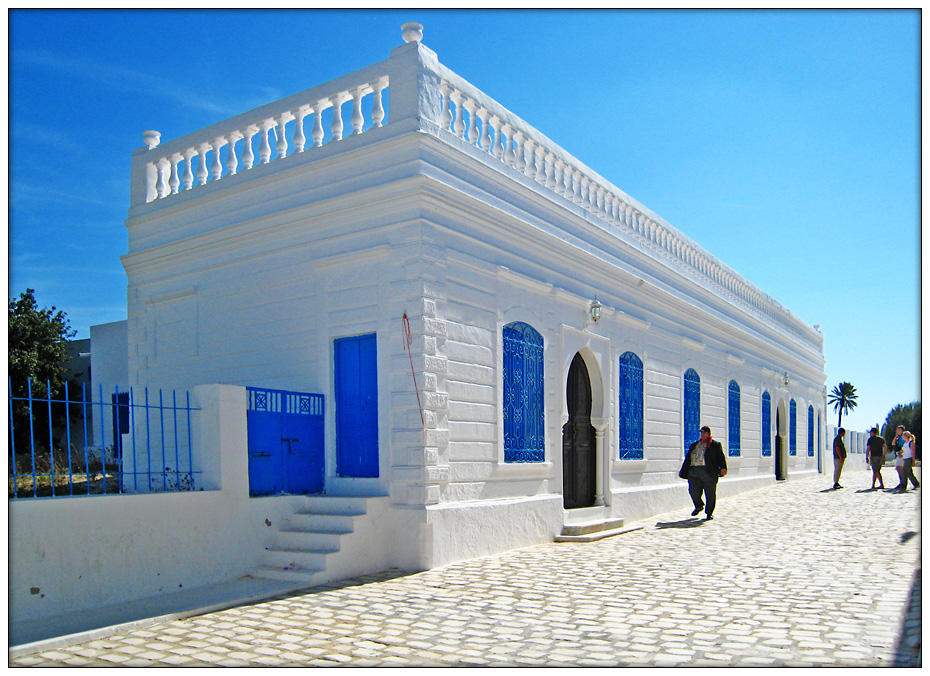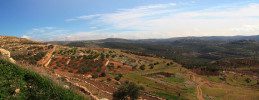| ruins of ancient synagogue, Jericho, courtesy, BibleWalks.com |
Jericho is
described in the Hebrew Bible as the "city of palm
trees". During the time of Joshua, the town commanded the entrance to the Land of Israel. Hence while
Joshua was still encamped at Shittim, east of the Jordan, he sent two spies to
investigate the state of the country in general and of Jericho in particular. The spies lodged at the house
of a prostitute, Rehab, in the wall of the city, and, upon their presence being
suspected, Rehab let them out through the window by means of a rope. When the
armies of Joshua finally crossed the Jordan and encamped nearby at Gilgal,
they besieged the city, marching around
it once a day for six days and seven times on the seventh day. When the last
circuit had been made and while the [seven] priests blew trumpets, the
Israelites were ordered to shout, and when they did so, the walls fell down
before them. The conquerors, by special command of the Lord, spared the life of
none, not even the cattle. The only exception was Rehab and her family, who
were saved due to the kindness she showed to the spies. The city and everything
in it were then burned; only the vessels of gold, silver, copper, and iron were
declared sacred and were reserved for the treasury of the Lord. Afterwards,
Joshua pronounced a solemn curse on anyone who should rebuild the city.
The site of Jericho was then allotted to the tribe of Benjamin. When the Kingdom of Israel was divided into north and south, Jericho, even though part of Benjamin tribal territory, found itself as part of the northern Kingdom of Israel in the southeastern corner near the border with the southern Kingdom of Judah. During the reign of Ahab, the city was rebuilt by Hiel the Bethelite according to the word of the lord (I Kings 16:34) which presumably lifted the curse. Afterwards, the sons of the prophets settled there. Elisha "healed" its waters by casting salt into them (II Kings 2:5, 19-22; today, this site is marked by Elisha’s Spring lying between Tel Yericho, a major archaeological site in the area, and the ancient Shalom al Yisrael Synagogue). Elijah's ascension to heaven took place nearby.
The site of Jericho was then allotted to the tribe of Benjamin. When the Kingdom of Israel was divided into north and south, Jericho, even though part of Benjamin tribal territory, found itself as part of the northern Kingdom of Israel in the southeastern corner near the border with the southern Kingdom of Judah. During the reign of Ahab, the city was rebuilt by Hiel the Bethelite according to the word of the lord (I Kings 16:34) which presumably lifted the curse. Afterwards, the sons of the prophets settled there. Elisha "healed" its waters by casting salt into them (II Kings 2:5, 19-22; today, this site is marked by Elisha’s Spring lying between Tel Yericho, a major archaeological site in the area, and the ancient Shalom al Yisrael Synagogue). Elijah's ascension to heaven took place nearby.
In
the 1st century, the city was again destroyed, this time, by
the Romans, but it was rebuilt shortly thereafter. It became a Jewish center
once more under the rule of the Byzantine Empire during which time, the Shalom
al Yisrael Synagogue was built. (Today, the Zionists and Arabs have restricted
access to Jewish visitors.) In the 7th century, Jewish refugees
from Mohammad’s Arabia, especially the Banu Nadir, settled in Jericho,
augmenting the indigenous Jewish population. In addition, the literary
practitioners of the Masorah mention a "Jericho Codex" existing there. The city remained a
Jewish center until the coming of the Crusaders in 1099 at which point, Jericho
was completely destroyed. For many centuries afterward, no Jew lived there but
Jewish visitors and travelers often traversed the area.
After
World War I, there was a small Jewish community in the city but they were
forced to leave after the Arabs became violent. After the War of Independence
in 1949, the Arabs of Jordan occupied and ruled Jericho in which state it
remained for the next 19 years. In 1967, the area was liberated by
Israel, but it was handed over to the newly-formed Palestinian Authority in
1994.
In
1977, Jews began returning to the area, with the founding of the village of Mitzpe Yericho during the holiday of
Sukkot. It was supposed to have been located on
government lands adjacent to Jericho. But due to the objection of then Defense Minister Ezer Weizman, they were moved to Mishor Adumim.
Agriculture Minister Ariel Sharon suggested a few
days later that they relocate to a barren hilltop overlooking the city, the
current location. The original residents of the area were a mixed group of
both religiously observant and non-observant Jews.
In 1979, they split up into two groups, and the non-observant members
established a new community, Vered Yericho, located below
Mitzpe Yericho and closer to Jericho. The third community, Mevo'ot Yericho, founded in 1999, is today,
an Israeli communal
settlement located just north of the city, in
the Yitav Valley. In more recent
years, Nahal Elisha was founded on
the eastern outskirts of the city.




